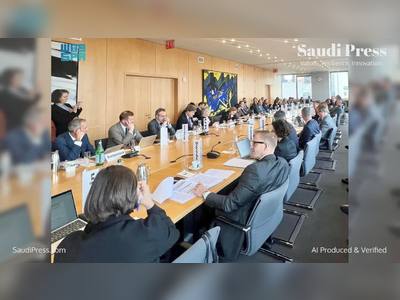
Saudi Arabia’s conservation transformation
My 10-day road trip through Saudi Arabia started, as so many long car journeys often must, in the early hours of the morning before the sun had yet to rise.
Hours before I’d touched down in the port city of Jeddah on the Red Sea coast, ready to meet my first host. A six-month-old Arabian leopard cub.
Taif
After the cold of London, Saudi Arabia's dry, desert heat was a warm embrace. However, the cub — the 16th leopard to be born as part of a captive breeding programme in Taif city — was less enthusiastic to welcome me.
Grumpy, camera-shy and very aggressive, the young leopard cub had all the necessary skills it would need to survive in the wild in the future.
The cub is part of a breeding programme that is bringing native Arabian leopards back to Saudi Arabia’s landscape. It’s a long-term project. Decades of environmental degradation mean the country’s desert ecosystems can no longer support large predators. So the animal lives in a specially created centre, learning to forage, fight for food and interact with other leopards so that when the time comes, the cub will be ready to live and start a family alone.
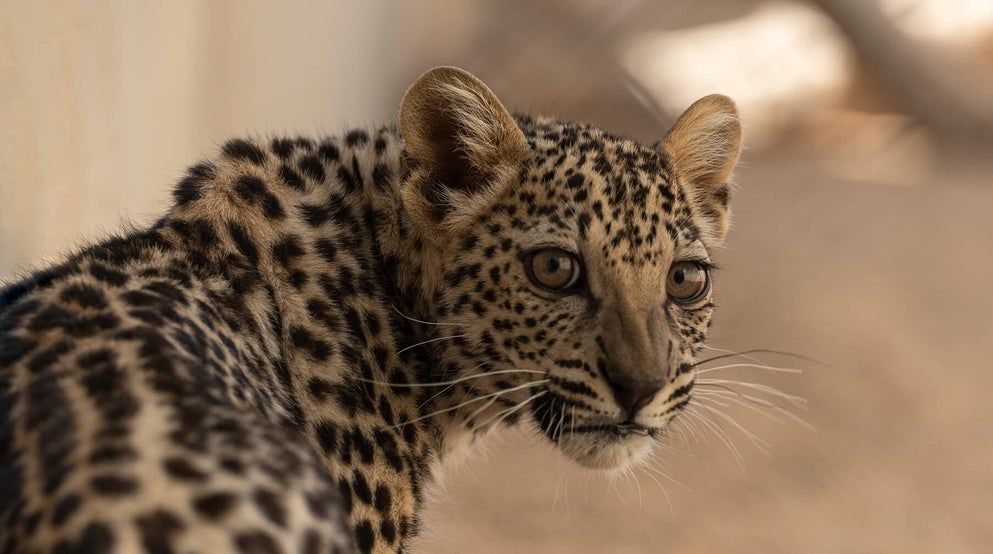 Cub and adult leopards at the Taif breeding programme in southern Saudi Arabia
Cub and adult leopards at the Taif breeding programme in southern Saudi Arabia
My decision to visit Saudi Arabia came from a place of deep curiosity and no small amount of personal conflict. As a wildlife photographer who has travelled the globe documenting how our planet’s ecosystems are thriving or, sadly more often, suffering, this Middle Eastern region has remained largely invisible to me.
We all understand that this part of the world is better known for its crude oil production rather than environmental action. Yet, I also knew that change was in the air. In the past few years, we have had glimpses of extraordinary activity within the Kingdom that are cause for real hope.
Two years ago, the Kingdom opened its doors to tourists from the outside world for the first time. At the same time, it stepped up as an advocate for the nation’s environment, vowing to protect and restore this historic landscape as the Kingdom diversifies its economy away from oil.
The country has since pledged secure, long-term funding for a series of conservation projects, such as new nature reserves and an expansive afforestation programme.
We’ve begun to see a steady procession of highly-qualified conservationists cautiously move to Saudi Arabia to be part of this period of deep transformation. And if you ask them why, they simply say: “This is a once-in-a-lifetime opportunity to make change on a global scale.”
The breeding programme in Taif, southern Saudi Arabia, is just one example of this national effort. Sadly, the nation’s once-common native species such as leopards, the Arabian oryx, ibex, and barbary lions have all slowly disappeared from view.
This is why I felt unable to refuse the opportunity to document the Kingdom’s efforts to rebalance their vast, historic and rarely-viewed home and meet the conservationists from all over the world who have come to Saudi Arabia to help realise this vision.
The Red Sea Project
After two days spent with an uncommunicative yet undeniably gorgeous leopard cub, I moved north.
I was heading along the western coast of Saudi Arabia, towards the luxury tourist resort destination of The Red Sea Project.
Al Fuqayyir
Awaiting me were 90 pristine, untouched islands sitting in a lagoon between the cities of Umluj and Al Wajh, which have been reserved for the development of a resort that hopes to welcome 1 million visitors per year by 2035.
So how would conservationists protect this delicate ecosystem in the face of such huge upheaval?
To find out, I waded through the chest-height lagoon with cameras tucked in a waterproof bag, behind two of the country’s top scientists, Cecilia Martin and Licia Calabrese, who both worked for The Red Sea Development Company (TRSDC) and are charged with protecting the fate of its native inhabitants.
Working with these scientists was like sitting on top of Mount Everest in terms of the sense of scope and power of their work. In the distance, you can see a mini city filled with construction workers laying out the foundations and infrastructure for a luxury tourist destination, and yet as a direct consequence of their work, construction will be halted and a new plan drawn up in order to protect the local ecosystems from any harm.
They have the ability to say: “stop!” Which is all too often not the case with these types of projects. One simple way they can determine the welfare of the coastal environment, which is home to mangrove forests, coral reefs and rare animal species, is by paying close attention to the organisms that live there.
As we moved through the shallow flowing waters that circle the islands, we came across an upside down jellyfish. The wellbeing of these creatures indicates whether the coral reefs further out to sea are also likely to be healthy. Like corals, these jellyfish produce food from sunlight using photosynthetic algae stored inside their bodies. However, if sea temperatures rise, then this algae is expelled, causing them to die. The same goes for coral reefs.
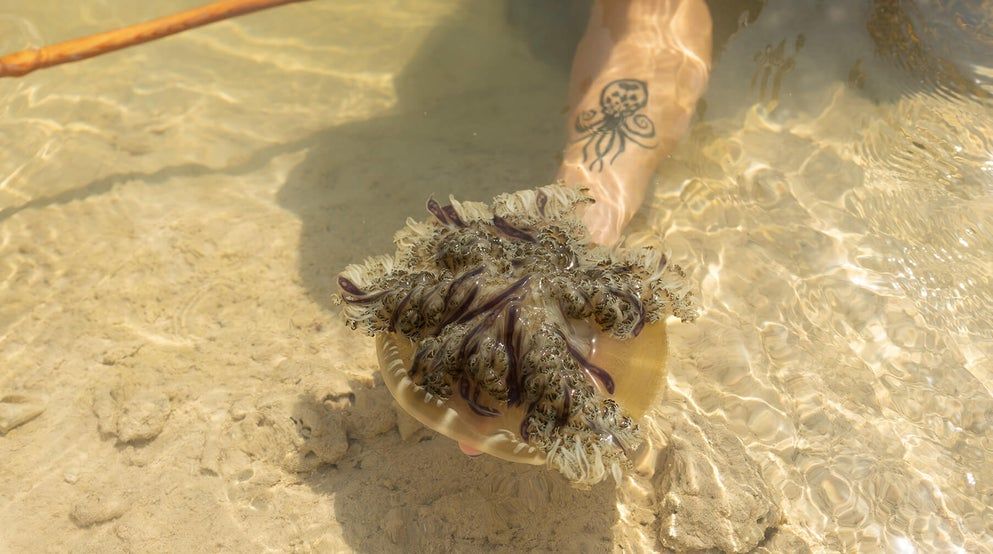 Conservation scientists examine the wildlife and mangroves forests on the Red Sea coast, western Saudi Arabia
Conservation scientists examine the wildlife and mangroves forests on the Red Sea coast, western Saudi Arabia
Indicator species such as these tell scientists whether the local environment is being negatively impacted by human activity and causing adverse changes to the climate.
These creatures also indicate that the water is flowing freely around the islands and will likely be able to support the tangle of mangrove plants sprouting from the salty seafloor on every shoreline.
Scientists are keen to protect and study mangroves for a good reason. These unusual forests support minnows amongst their aerial roots, with mud creepers, whelks and snails. Birds and pollinators also live among the leaves and tiny flowers. They also have huge potential for carbon sequestration.
On the islands themselves live sooty falcons. These fast, highly agile birds of prey feed on small birds and insects captured in flight and like to breed in harsh desert and semi-arid habitats around the Middle East.
The global survival of this species is increasingly threatened by predators, such as cats and rats, and human disturbance. But for now, this uninhabited environment is ideal for these birds as they can safely nest on the ground, undisturbed by any of the above.
I watched the scientists carry out assessments in order to identify the most important breeding sites and ensure they are carefully preserved. In some cases, they enhanced those sites with nesting boxes.
They also fitted a small number of falcons with tiny rucksack GPS devices to allow the monitoring of their safe migration and identify foraging and resting sites.
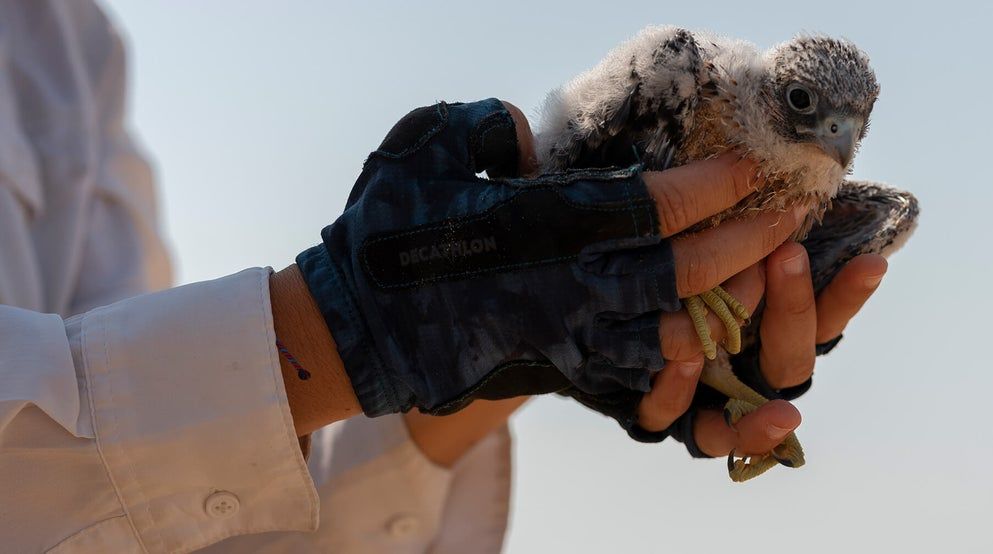 Conservation scientists assess sooty falcon nesting sites on uninhabited islands, just off the western coast of Saudi Arabia
Conservation scientists assess sooty falcon nesting sites on uninhabited islands, just off the western coast of Saudi ArabiaPrince Mohammed Bin Salman Reserve
The following morning we’re on the road again at 3am, watching the dark desert roll by as we head even further north towards the Prince Mohammed Bin Salman Reserve.
Despite the hour, I’m thick in conversation with world-renowned South African conservationist Andrew Zaloumis who’s leading the rewilding of the newly created 24,500 sq km Prince Mohammed Bin Salman Reserve.
Andrew has been tasked by his Board, chaired by the Crown Prince, to bring the landscape back to how it would have been 100 years ago, with species such as the Arabian Ibex able to move freely on mountain ranges. He tells me he was instantly struck by the breadth of ecosystems, from the groves of wild date palms and intensely green oasis found in valleys, known as wadis, to breathtaking rock formations. “The difference between this project and others I’ve worked on, comes in the sheer scale of the project, and the strength and vision of its leadership,” he tells me.
These conservation efforts are nested in Saudi Arabia’s Vision 2030 that sees protected areas growing to 30 per cent of the Kingdom's total land by 2030. Andrew says the sheer size of the land gives him the chance to drive globally significant conservation, and the level of investment means his team can establish new techniques and technologies, as well as standard management and restoration practices, that will have impact beyond their borders.
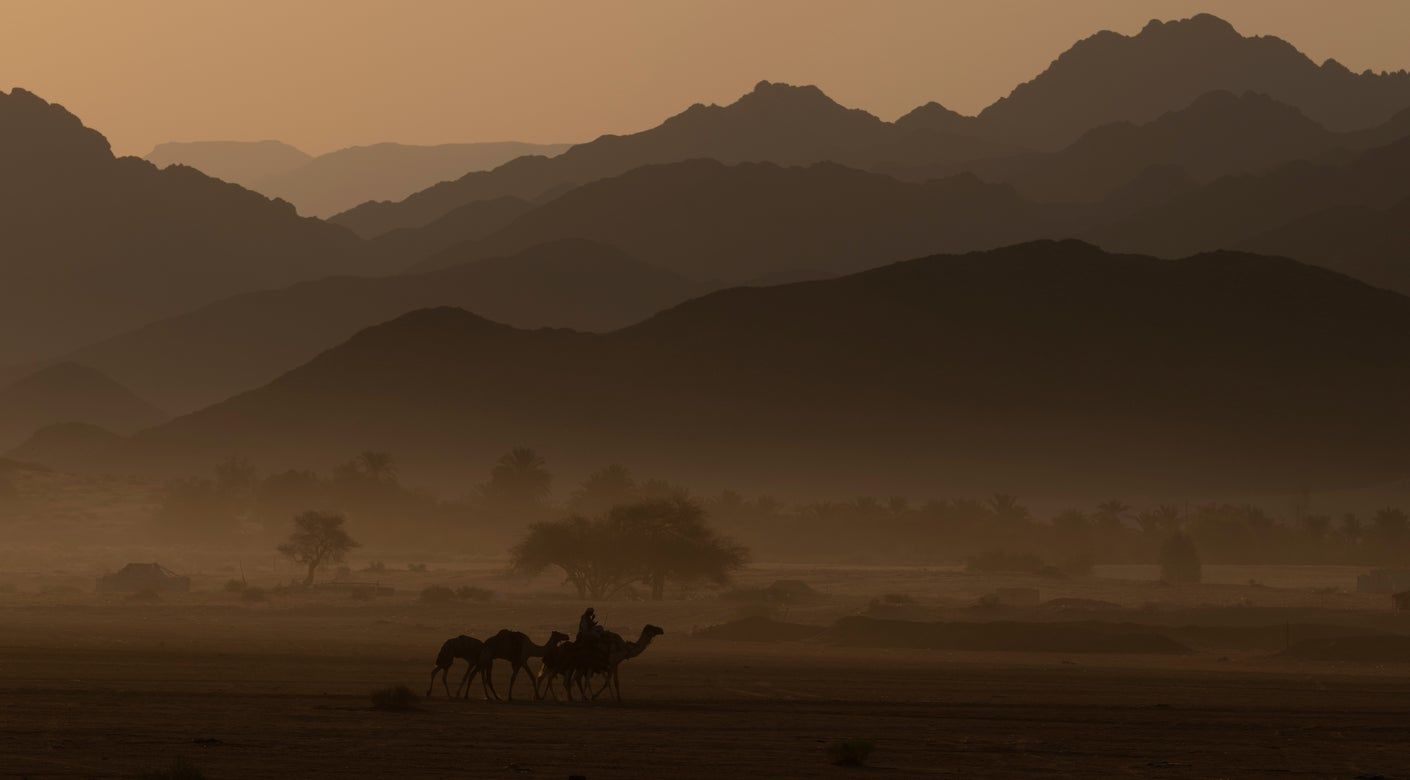 Camels at dawn near to the Prince Mohammed Bin Salman Reserve
Camels at dawn near to the Prince Mohammed Bin Salman Reserve
“In many ways this feels like a start-up,” says Andrew. “We’re recruiting people, both Saudis and expatriates who have a background not just in hard conservation, but also in creating new reserves.” One of the things that he’s most excited about is working with surrounding conservation projects such as NEOM, AlUla and The Red Sea Project to create important ecological corridors. A key part of his early work will be to reestablish the Houbara bird population, which acts as an important link in the ecosystem. His team will also grow the number of plant species from around 120 to 200 by 2030.
Every section of the local community will need to play their part in order to achieve this vision, he says. Former hunters have been trained to become rangers and are already using their knowledge of the local bush to aid the rewilding process, while education programmes are planned to run across all 140 local schools.
“You need to make sure the benefits of this work are accruing locally,” he says. “So right now, we’ve employed local people to help us with all the early-stage cleanup efforts.” His team is also running an internship to bring skilled Saudi workers into the reserve and put them through a 12-month conservation management training programme.
“That way you're building your future conservation leadership and meaningful empowerment,” he says. It’s extremely rare for a conservationist to be presented with a blank canvas in this way. His work can be guided by the rock paintings that are prolific in this reserve. Ancient paintings of cheetahs, leopards, oryx and barbary lions show that these animals all once roamed freely here, offering a very real insight into what’s been lost.
The magical nature of the landscape takes your mind to an ancient time. Maybe it's the early hour of the conversation with the sun’s first rays bathing the earth in a prehistoric glow. But to me, these efforts to re-establish this landscape exactly as it was in the past, with leopards living alongside humans, seem close to mythic.
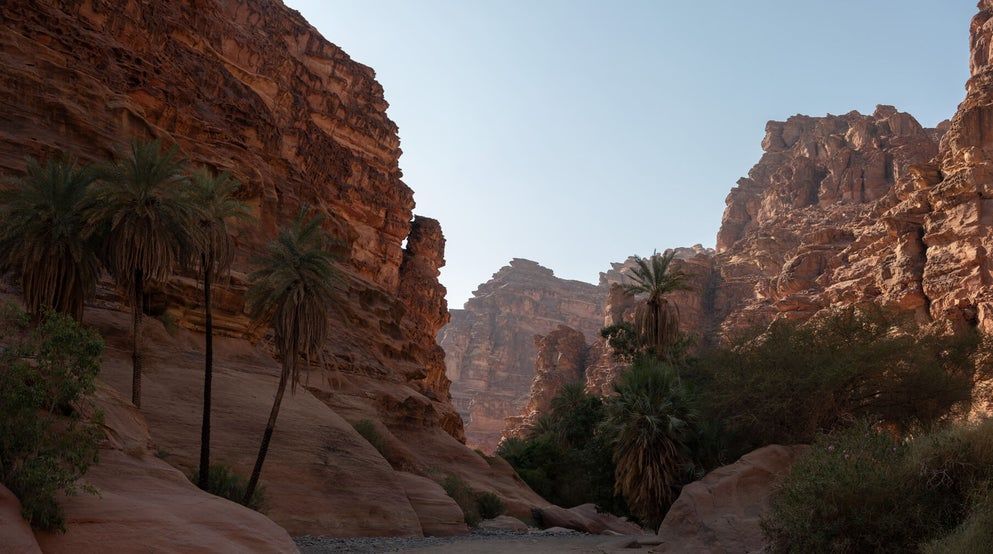 The lush, green oasis hidden amongst the rocks at the Prince Mohammed Bin Salman Reserve
The lush, green oasis hidden amongst the rocks at the Prince Mohammed Bin Salman ReserveNEOM
Our next destination took us away from the fleeting lush oases of the Prince Mohammed Bin Salman Reserve towards the spectacular geology and diverse landscapes of NEOM.
Here, I met Dr Paul Marshall. A conservationist originally from Australia with a similarly daunting task. To rewild and restore this 26,500 sq km stretch of land in northwest Saudi Arabia, five per cent of which will one day be home to millions of residents, while 95 per cent will remain protected.
When Paul first joined the project, he worked with urban planners to come up with a complete reimagining of how humans and nature could live in harmony. The result was an innovative, zero-carbon, linear urban living model called The Line, where residents will live and work alongside vast tracts of protected land.
The natural landscapes of NEOM are in need of respite from a long history of unmanaged human activity. Overgrazing, hunting, tree removal, and an overuse of groundwater have all accelerated the region’s desertification and where once you would have seen gazelles, leopards, cheetahs and lions, such wildlife is now largely gone.
What has already come back, though, is a desire to restore this land to its former glory.
Paul is working to accelerate the recovery of tree and ground cover to support the return of indigenous wildlife. This will start with a pilot project to bring back the Arabian oryx, ibex and sand gazelle. Eventually, through staged initiatives, the rewilding will be expanded to the entire NEOM region.
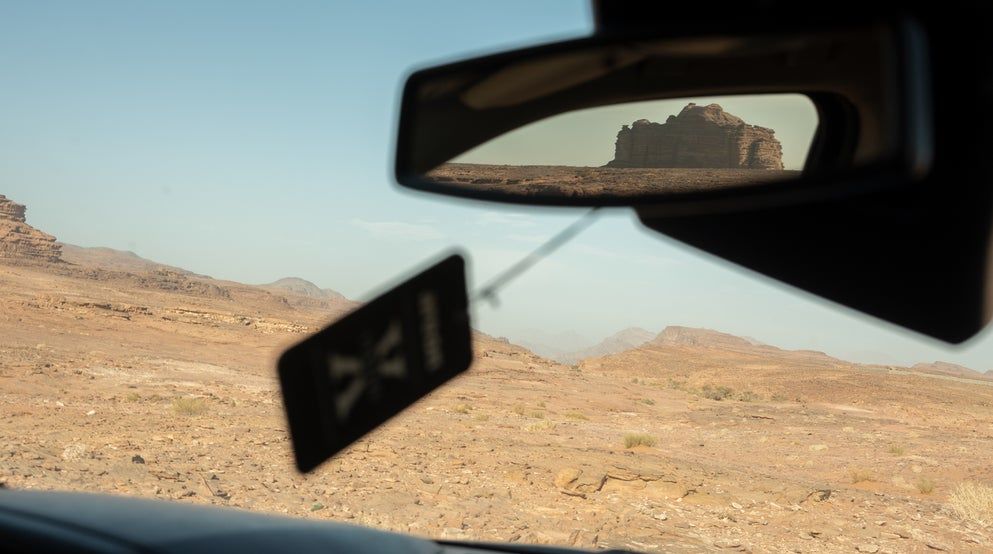 Driving towards the nature reserve in NEOM, a new region being developed in North-Western Saudi Arabia.
Driving towards the nature reserve in NEOM, a new region being developed in North-Western Saudi Arabia.
Local people are being recruited to become rangers who will be trained to manage the region and be instrumental in ensuring that the growing tourism industry can go hand-in-hand with conservation.
As I travelled through NEOM, again, I was confronted by ancient history. The ravine here is surrounded by rock outcrops stencilled with ancient rock art and peppered with prehistoric rock tombs and shelters. From its most inland point, you see a tear in the earth that channels rare rainfall all the way to the coast. It’s truly extraordinary.
AlUla
Our next destination was the Sharaan Nature Reserve in the mountainous region of AIUIa.
Speaking to Waleed Al Dayel, an ambitious and highly thoughtful conservation strategist with developing the plans that will eventually convert 80 per cent of AlUla into nature reserves, I was struck by how much good has been achieved here in such a short space of time.
Since 2019, his team has planted 1,000 indigenous trees in a bid to reverse the impacts of decades of tree-cutting, and 20,000 indigenous seedlings have been planted to encourage vegetation coverage across the 1560 sq km that make up the reserve. There is also an ongoing cleanup programme to restore the entire area from the effects of human activity, such as waste dumping by tourists and farmers. In 2021, AlUla launched a further programme to restore 100 hectares of degraded arid habitats.
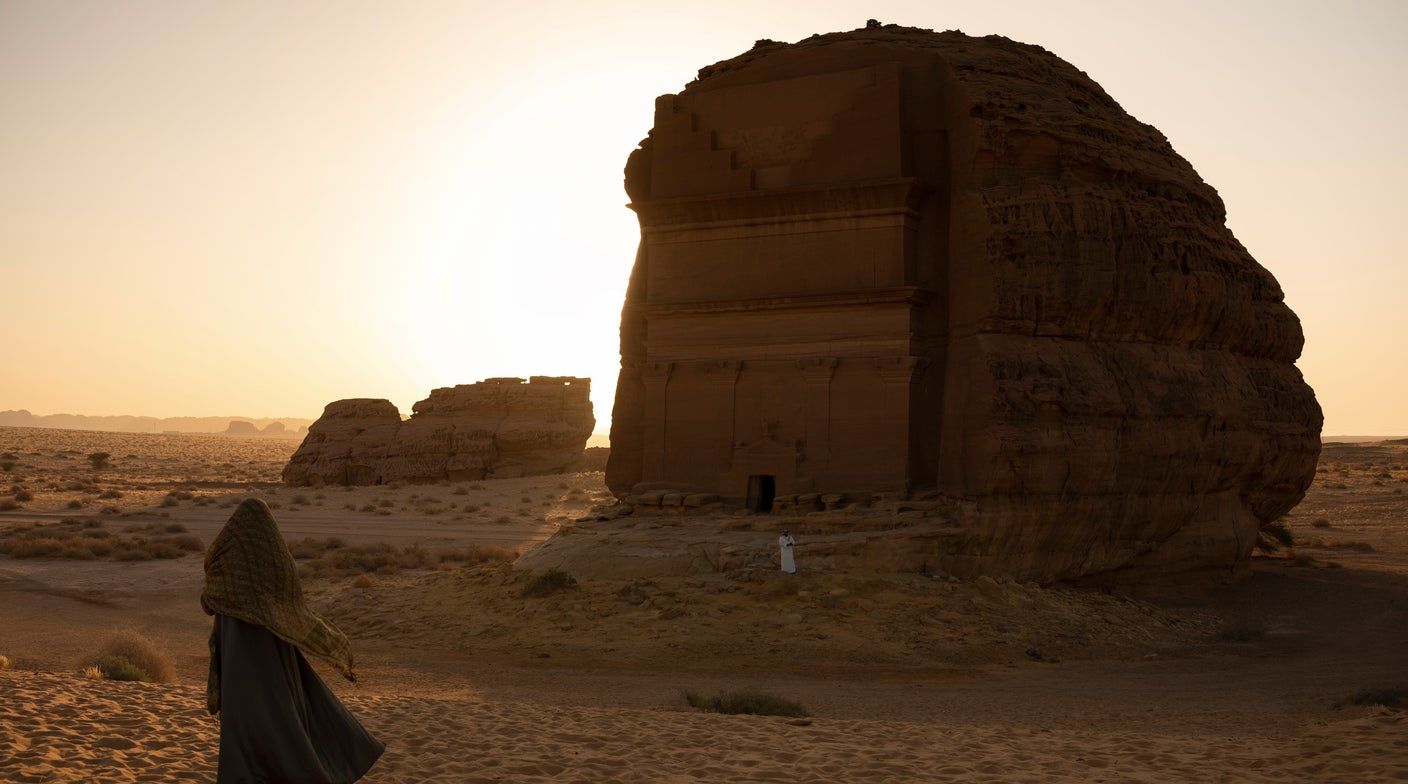 Nabataean tombs carved into the rocks at Hegra, AlUla, north-western Saudi Arabia.
Nabataean tombs carved into the rocks at Hegra, AlUla, north-western Saudi Arabia.
It is hoped that the Arabian leopard will once more one day roam free in this wilderness.
However, an apex predator can’t simply be released into an area that currently doesn’t offer prey, so the breeding and reintroduction of species such as the Nubian Ibex and Idmi Gazelle is underway alongside its leopard breeding program.
The focus from the start — just four years ago — was to engage the local community in this long term project. A scholarship scheme was set up to enable students from AlUla to study subjects such as agriculture, conservation, geology, history and archaeology at top institutions across the world to give them the skills they would need to support their local community in the future.
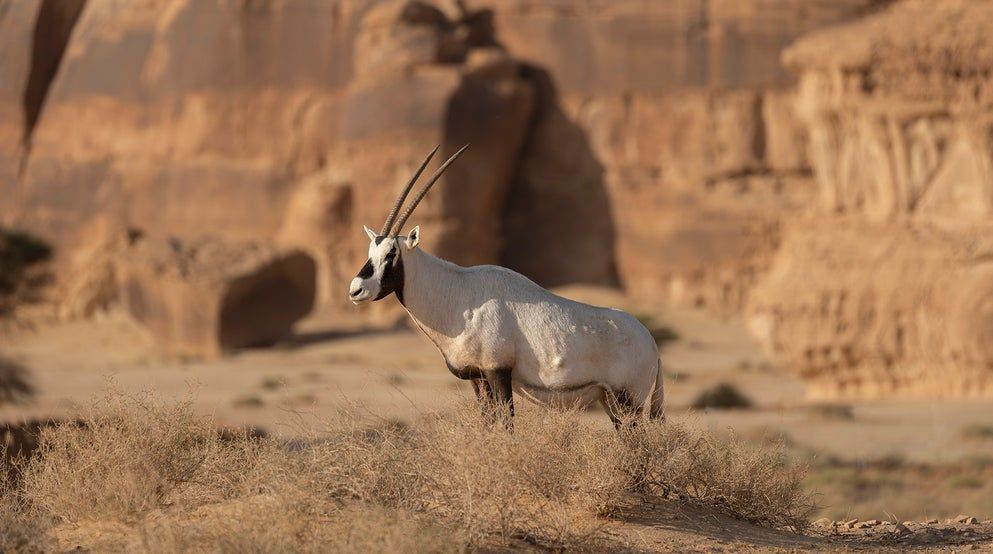 Arabian Oryx, Nubian Ibex, and Idmi Gazelle released in the Sharaan Nature Reserve in AlUla, north-western Saudi Arabia.
Arabian Oryx, Nubian Ibex, and Idmi Gazelle released in the Sharaan Nature Reserve in AlUla, north-western Saudi Arabia.
The team has also given workshops to 2,000 young local people about the region’s natural heritage in the hope they will become ambassadors for its protection.
There is no doubt in mind that these schemes are hugely important. Without the local community’s investment, long-term conservation efforts are almost bound to fail or suffer, in my experience.
One ranger described to me how his father was a hunter. Now that ranger is part of the cleanup programme and deeply knowledgeable about his home’s ecosystem. He wants to help protect the land and return it to a habitat where animals can live and roam freely.
This is the kind of generational change that the world needs.
Riyadh
Finally, I reached my journey’s end. The Saudi Green Initiative (SGI) Forum. The Kingdom’s first environmental conference is dedicated to exploring the future of its recently announced climate action goals.
After 10 days on the road, it was a chance to reflect and put context around what I’d seen. Two purpose-built eco-friendly domes were filled with experts discussing how the SGI goals, such as raising the percentage of protected areas to more than 30 per cent of the Kingdom’s total land area, could be achieved.
Such targets seemed a lot closer in reality to me now.
The conservation experts I’d met on my travels were acting as representatives of their work. Standing shoulder to shoulder with the Kingdom’s most influential change-makers, Paul Marshall, Waleed Al Dayel, Andrew Zaloumis and others, impressed on them Saudi Arabia’s potential to become a global environmental leader.
The forum was an opportunity for me to reconnect with the friends I’d made and make a personal commitment to myself to continue to document this story. I now know first-hand there are committed individuals in Saudi Arabia who care passionately about this work. And I look forward to playing a small role in recording their future achievements.
